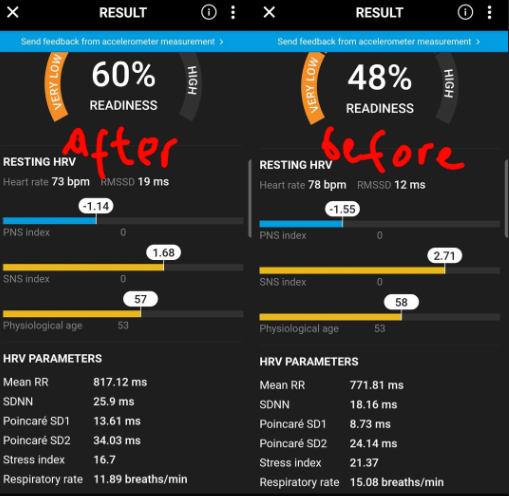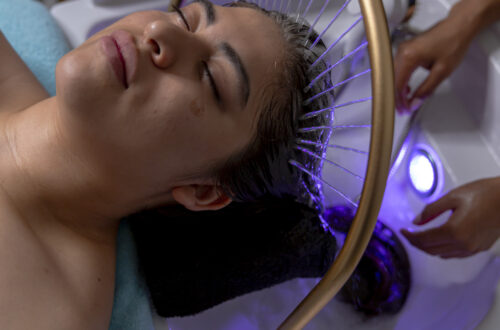Best Vagus Nerve Stimulator (VNS) Devices in Canada – 2026 Research Report

As someone deeply invested in optimizing health and wellness, I have spent considerable time researching and, where possible, personally trialing vagus nerve stimulator (VNS) devices in Canada. My experience spans both implantable and non-invasive (external) VNS devices, with a particular focus on their availability, efficacy, safety, and user experience within the Canadian healthcare context. Below, I provide a comprehensive overview, integrating personal insights, user testimonials, clinical research, and regulatory realities.
Who am I: I am with OSHF and I’ve done extensive research, with a focus on high effort, balanced pros and cons, and reference to available articles and data.
Types of VNS Devices Available in Canada
1. Implantable VNS Devices
- Indications: Primarily used for drug-resistant epilepsy and, to a lesser extent, treatment-resistant depression.
- Availability: Approved in Canada since 1997, with the NeuroCybernetic Prosthesis (NCP®) System being a notable example .
- Cost: The latest implantable VNS units are priced around $24,000 CAD . There are cheaper options available that are ranked high in this best vagus nerve stimulation device list if you’re looking for a budget option.
- Coverage: Fully covered by provincial health care systems for approved indications, so there is no direct cost to the patient, but funding is limited and access can be slow .
2. Non-Invasive (External) VNS Devices
- Pulsetto: Moderate pricing. As seen on “Dont Die” documentary featuring Bryan Johnson who performs intensive research on every anti-aging + alternative health device. It is also the most popular device by far on the market.
- My findings so far (After & before activity from using the Pulsetto) : Physiological age dropped one full year down (younger metabolically); resting heart rate dropped (feel more calm); stress index dropped A LOT!

- Saw a study that said it works for 29 out of 30 people for improving symptoms of fatigue + boosting energy according to a recent survey conducted.

2. Apollo: Slighty pricey but has tons of 4-5 star reviews. 2nd most popular on the market. I love using it as its portable and its not visible when using it in public. No weird looks. Feel calmer and relaxed after using it.

- Indications: Used for wellness (stress reduction, mood improvement), potentially for post-COVID-19 symptoms, and investigational uses.
- Market Growth: The Canadian VNS market is growing rapidly, with revenues expected to double from 2023 to 2030 .
- Cost: ~$200-300 (Pulsetto is a well-known brand) – View Official Site
Personal and User Experiences
Finding User Testimonials
- Social Media & Forums: Canadian users often share their experiences on Facebook groups, Reddit, and health forums. These platforms are invaluable for gathering authentic, unfiltered feedback .
- Review Sites: While less common for medical devices than for consumer electronics, some review aggregators and wellness blogs feature Canadian perspectives.
Common Themes in User Experiences
- Implantable Devices:
- Pros: Many users with refractory epilepsy report significant reductions in seizure frequency and improved quality of life. Some also note mood stabilization as a secondary benefit.
- Cons: The surgical procedure is invasive, with a recovery period and potential for surgical complications. Some users experience persistent side effects such as hoarseness, throat discomfort, and coughing, especially when the device is active .
- Access Issues: Despite full coverage, the process to qualify and receive an implant can be lengthy due to limited funding and specialist availability .
- Non-Invasive Devices:
- Pros: Users appreciate the non-surgical, drug-free approach. Many report improvements in stress levels, sleep quality, and mood after regular use. Devices are easy to use at home and can be self-administered under guidance .
- Cons: Efficacy can be variable—some users experience significant benefits, while others notice little change. There is also a learning curve to proper placement and usage. Device cost and lack of insurance coverage for wellness indications can be barriers.
Clinical Evidence and Research
Efficacy for Wellness and Stress Reduction
- Research Findings: Non-invasive VNS has been shown to reduce stress (similar to how grounding sheets can help too) and improve mood by enhancing parasympathetic activity. Studies report improvements in heart rate variability and subjective well-being .
- Canadian Context: While specific Canadian studies are limited, the global research landscape is robust, and Canadian clinics are increasingly offering these devices for wellness applications .
Safety and Side Effects
- Implantable Devices: Well-documented safety profile over 25 years, but side effects such as hoarseness, throat discomfort, and, rarely, severe complications like aspiration pneumonia can occur. Device malfunction is rare but serious .
- Non-Invasive Devices: Generally considered safe, with few reported side effects. Users with pacemakers or certain heart conditions should consult a physician before use .
Contraindications
- Implantable VNS: Contraindicated in patients with a left vagotomy, certain cardiac or respiratory conditions, and in children under 4 years .
- Non-Invasive VNS: Caution advised for those with implanted electronic devices or certain neurological conditions.
Click here to Visit Pulsetto or Click here to Visit Apollo
Comparative Analysis
- Implantable vs. Non-Invasive: Implantable devices are more effective for severe, medically refractory conditions but come with surgical risks and higher costs (albeit covered for approved uses). Non-invasive devices are more accessible, safer, and suitable for wellness, but their efficacy for serious medical conditions is less established .
- Device Variety: The Canadian market is dominated by implantable devices for medical indications, but non-invasive options are growing, especially for wellness and post-COVID-19 applications .
Pros and Cons Summary
| Aspect | Pros | Cons |
|---|---|---|
| Implantable VNS | – Proven efficacy for epilepsy and depression- Covered by health care- Long-term data | – Invasive surgery- Side effects (hoarseness, cough)- Access/funding delays |
| Non-Invasive VNS (Pulsetto or Apollo) | – Non-surgical- Safe for most users- Useful for stress/wellness- Home use possible | – Variable efficacy- Not covered for wellness- Learning curve- Limited data for serious conditions |
Final Thoughts
From an “OSHf” (obsessive self-health-focused) perspective, VNS devices in Canada offer a promising adjunct for both medical and wellness applications. The implantable devices are life-changing for some, but access is tightly controlled and the process is not trivial. Non-invasive devices are more accessible and user-friendly, with a growing base of anecdotal and clinical support for stress reduction and mood enhancement. However, expectations should be realistic, and users should be aware of the limitations and potential side effects.

If you are considering a VNS device in Canada, consult with a healthcare provider, research user experiences on Canadian forums and social media, and weigh the pros and cons carefully based on your health goals and medical history.


